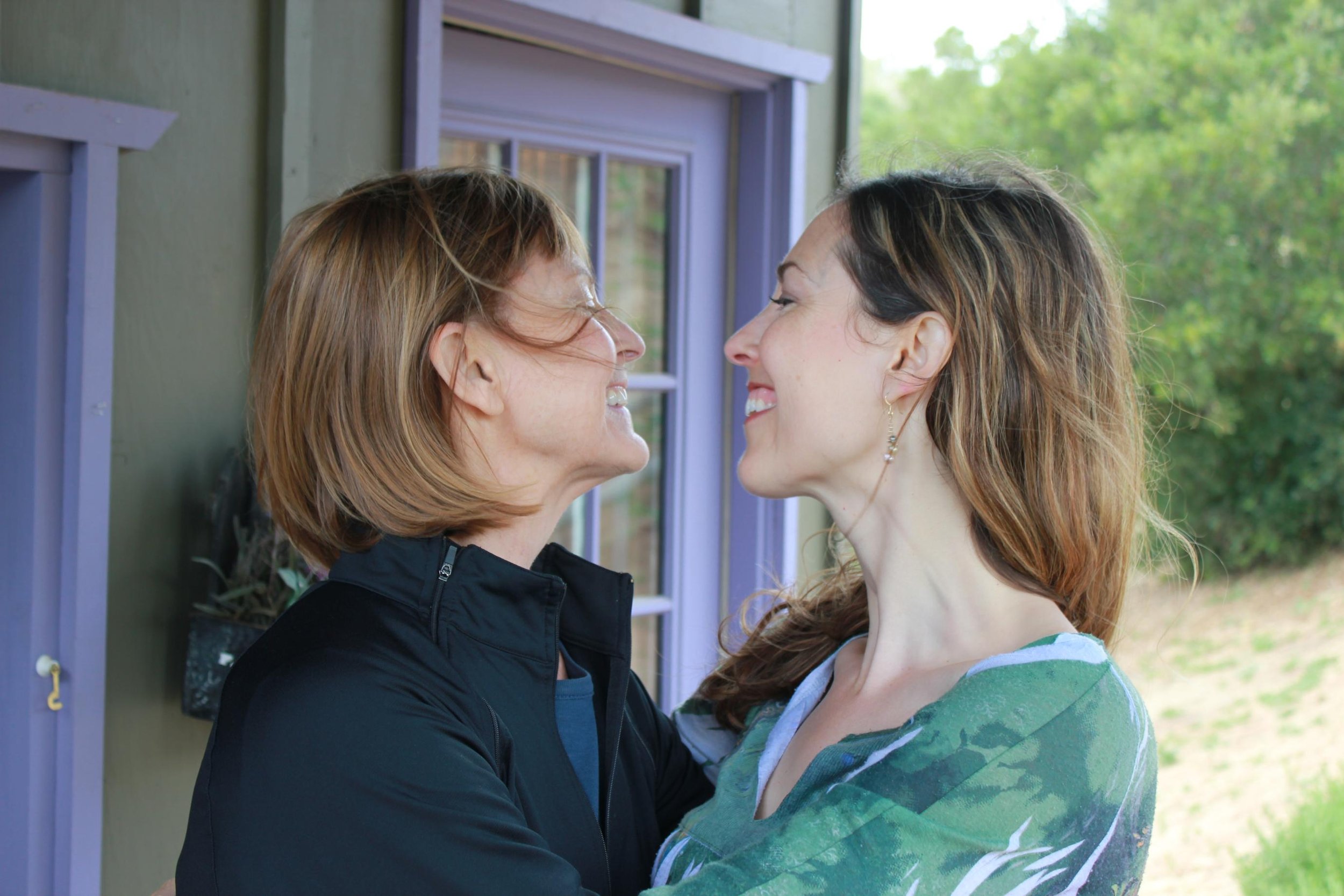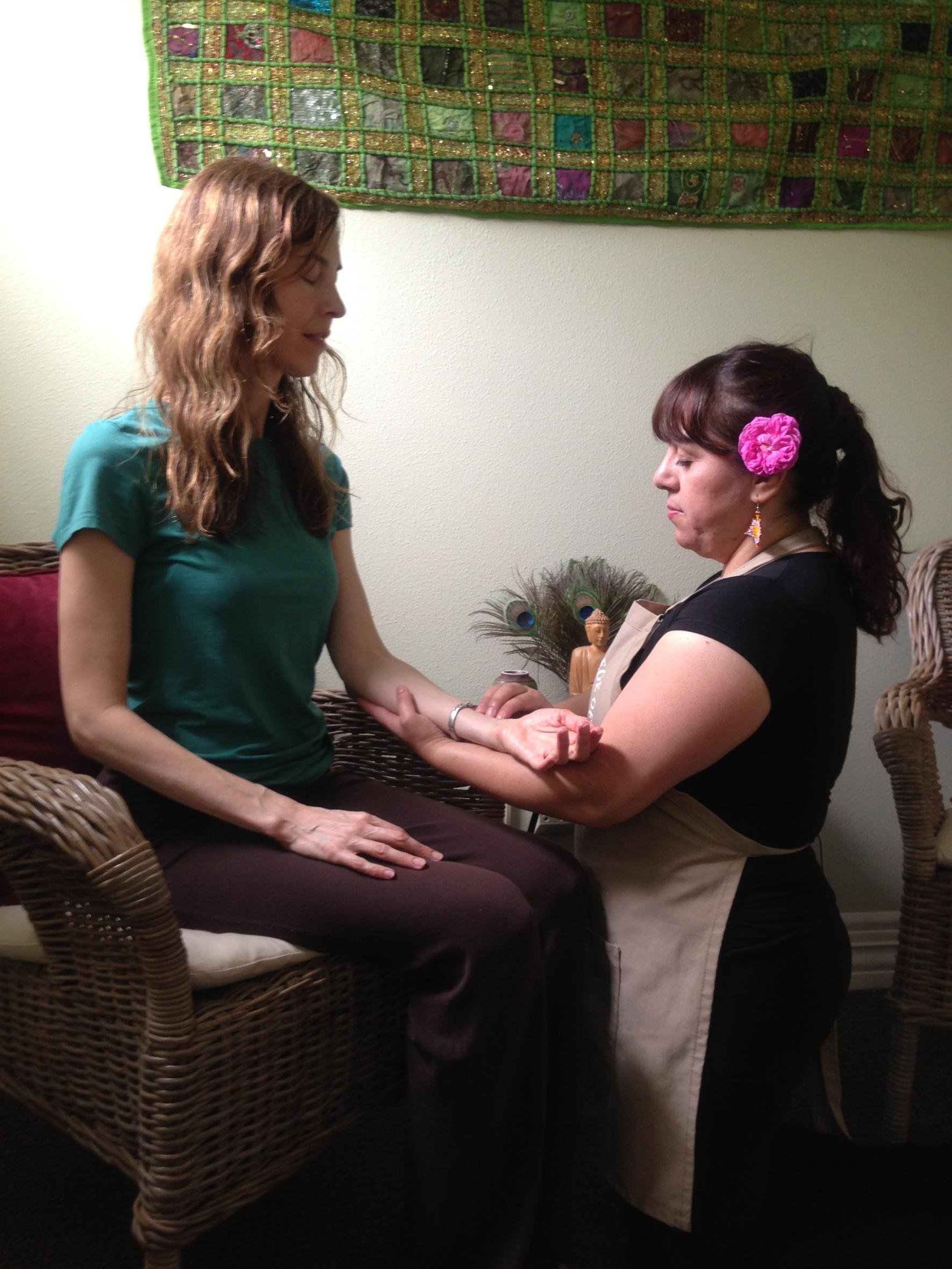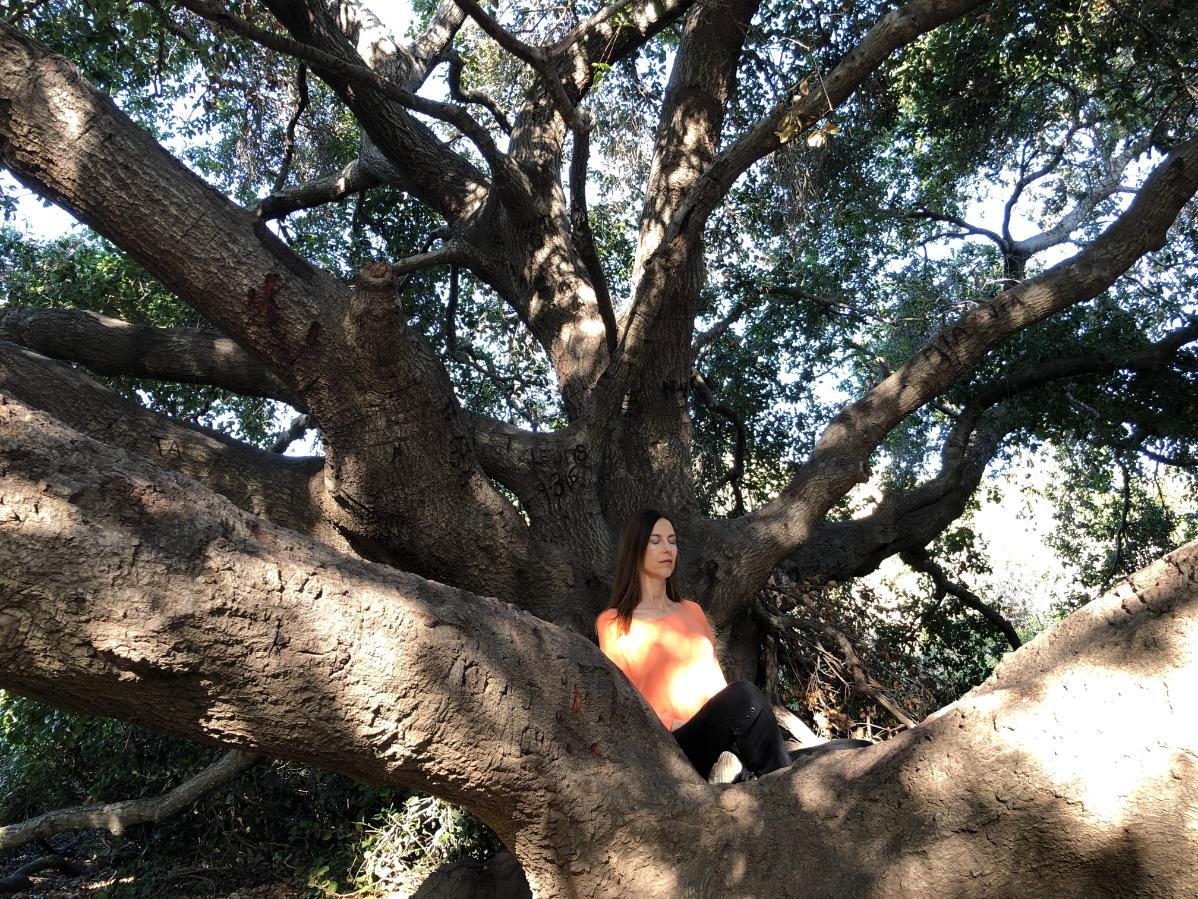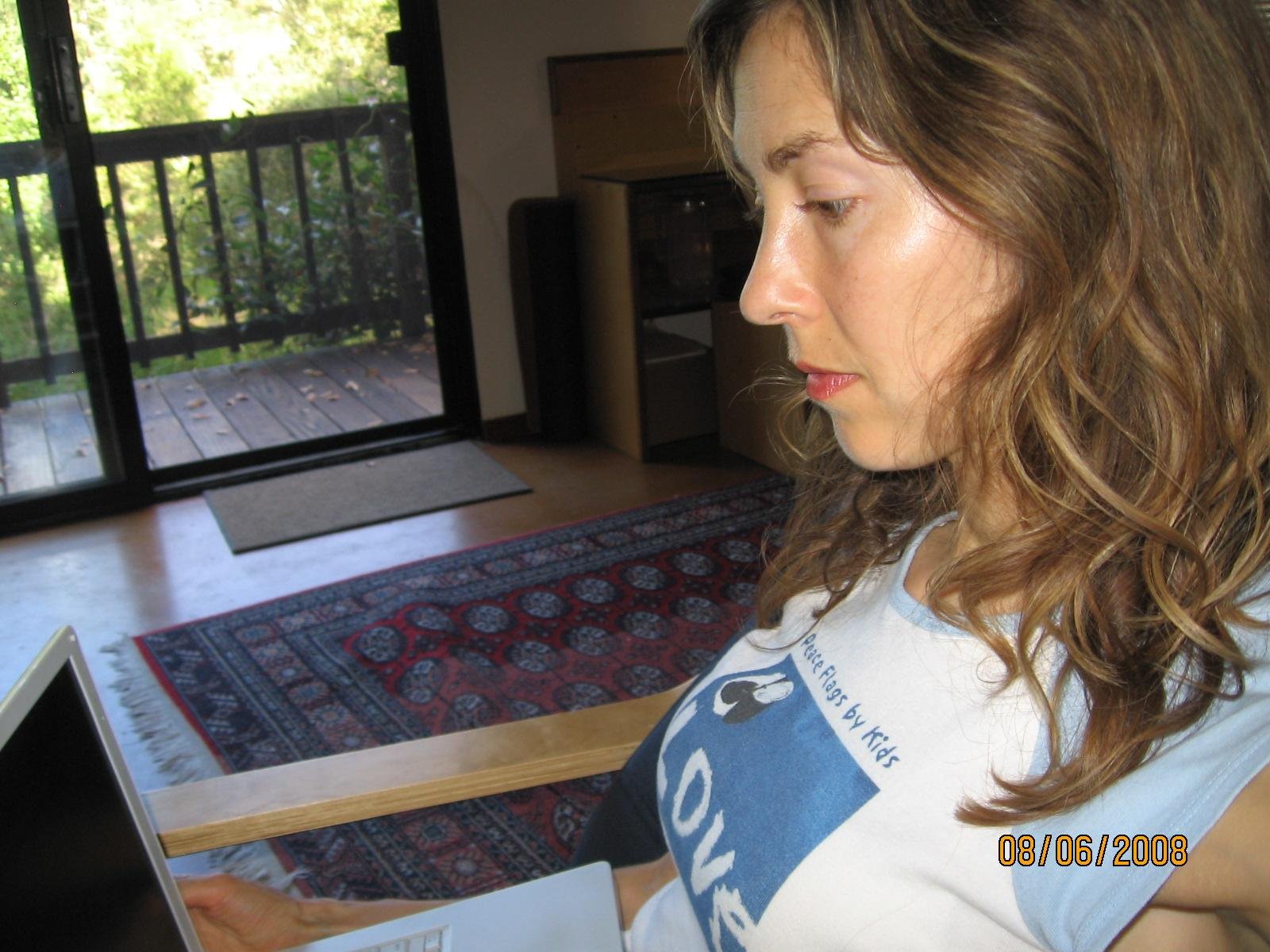Chronic Fatigue Syndrome: My 13 Year Crash to Cure Story
I was an active, ambitious journalist in my early thirties—until, suddenly, I could hardly walk from my bedroom to the bathroom. It started with what seemed like a nasty but pedestrian virus I caught on a trip abroad. Then—wham!—my system went haywire. I was hit with total exhaustion, brain fog, insomnia, body pain, anxiety, constipation, bloating and headaches.
Every part of me burned and ached. Previously a sound sleeper, I couldn’t sleep more than a few hours night after night. Simple words escaped me. I didn’t remember the names of colleagues or friends. When I’d stand up, I struggled to breathe and balance. Lightheadedness, weakness, fatigue. It felt like a never-ending hangover without anything resembling a party.
I’d entered into a kind of hell for which I had no reference. Needless to say, I was terrified. When I tried to return to my job as broadcast journalist, I nearly collapsed in the studio. As I braced myself on the news desk, my co-anchor looked at me like a foreign invader while bright lights swirled around me like a spaceship.
I would later be deemed disabled from chronic fatigue syndrome (ME/CFS). That was the primary diagnosis but there were many others: post-viral syndrome, Epstein-Barr virus, Fibromyalgia, Sjogren’s syndrome, Hashimoto's thyroiditis, chronic Lyme, adrenal exhaustion, candida overgrowth, leaky gut syndrome, heavy metal toxicity and pre-mature ovarian failure. When bladder pain and urgency became chronic, I was diagnosed with interstitial cystitis.
A Hopeless Prognosis
For years to come, my world became largely confined to my house. My main outings were doctor’s visits. My beloved mom drove me to general practitioners, osteopaths, neurologists, endocrinologists and rheumatologists. We also sought out physicians who specialized in ME/CFS, although they seemed to be guessing at the cause and cure of my symptoms too.
A dizzying smorgasbord of people in white coats surmised that the culprits could be faulty mitochondria, viral titers, inflammation, poor immune function, irregular hormones, an auto-immune response and plain old bad genes. They prescribed medications like trazadone, bio-identical hormones, cortisone, and thyroid drugs. One specialist put me on anti-viral IVs to target what he called “unprecedented levels of Epstein-Barr virus that had seeped into my brain.” Talk about terror! After that point, I swore I could feel the pernicious parasites creeping around my cranium. My health plummeted after each discouraging diagnosis.
Then there were naturopaths who prescribed intravenous vitamin concoctions, neurotransmitters, a gazillion different supplements and diets that eliminated nearly everything. I stayed on a stringent meal plan of green vegetables and either fish or chicken for almost three years, diligently avoiding starchy offenders like carrots or potatoes. Bread became a distant memory. Eating was devoid of pleasure. Yet, I was still so bloated I felt like I was in my first trimester. If only.
Chinese doctors stuck me with needles and had me boil herbal concoctions into a stew that tasted like tree roots, which indeed was part of the recipe. Ayurvedic physicians sent me to a 10-day cleanse called Panchakarma followed by weekly oil enemas at home. If you’ve never spent Saturday evenings wrestling with an enema bag, I don’t recommend it. Energy healers laid their hands on me. At times, I felt moments of relief but the symptoms would come roaring back post-treatment.
Each time I tried a new remedy, I’d soar with hope only to drop into despair on the never-ending rollercoaster my life had become. I started feeling like something worse than a foreign invader: an alien guinea pig trapped in an impersonal medical maze. Some doctors appeared disappointed at my progress and one even yelled at me.
As I realized that mainstream medicine was ill-equipped to treat my ailments, desperation bred bizarre encounters. The so-called “healing brothers” told me to chew my water thirty times before swallowing and then subsist on a hearty diet of grapes. A layperson blasted my “bugs” with a Rife machine in his garage while stray cats leapt on my mom’s lap. A blond pipe-smoking surfer interrupted my teary account of a traumatic event to tell me about her cat’s Halloween costume. For the record, it was the Cookie Monster, she charged $200 for the hour and she claimed to be a Western shaman.
The silver lining? Both the tears and the laughter my mom and I shared over this 13-year odyssey.
A resounding message I got from most practitioners: I was so fragile that overextending myself would deplete my adrenal glands and cause a massive setback. This is despite the fact that I lived in a crash. They told me to pace myself and not push beyond my energy envelope. This scared me so much, I rarely challenged myself—even though challenging myself was part of my nature. I’d lost touch with my essential self and my reason for being.
Traumatic Memories Emerge
After a few years, I began recalling more details of a traumatic event that happened right before CFS struck. I saw a therapist specializing in EMDR, a well-researched form of trauma therapy. In a cozy, dimly lit room, I recounted the rape as she politely asked me to follow her hand across my field of vision. Our months of therapy didn’t shift my symptoms as I hoped. But it still felt vitally important to explore this trauma in a therapeutic space. She was the first person I opened up to about the most terrifying experience of my life—one that stirred up memories of an earlier sexual trauma and ransacked my dreams in ways I never anticipated.
This began a phase of deep inner work. I saw everyone from yoga therapists to sleep psychologists. I screamed into pillows and imagined running away from the rapist. There were palpable releases. It felt like I was getting closer to the genesis of my ailment. And yet, I was led to believe these were two separate worlds: physical illness and emotional wounds. Doctors convinced me I had a mysterious disease for life. Therapists validated that I’d experienced significant trauma, as well as string of hurts to follow. But no one linked the two directly.
Finding refuge in nature in the depths of CFS
There was so much to grieve. But I often felt like my body was an iceberg and my mind a cloud watching from above. I’d lost a career I loved, the ability to support myself financially and my agency to participate actively in human relationships. I was deeply lonely but socializing triggered insomnia. At times, I rented my house on Airbnb to avoid foreclosure, which left me feeling rudderless.
Even more unbearable, I lost four cherished loved ones in the next five years: my grandmother, my father, a close uncle and a dear family friend. After my dad’s passing, my mom was hospitalized for weeks and almost died. I recall one New Year’s Eve sobbing like a baby in the hospital lobby, praying that her life be spared. She was my lifeline emotionally, mentally and physically. I truly didn’t know how I could survive without her. Thank God, my mom miraculously rebounded and is my best friend to this day.
Even so, my web of close-knit, extended family and my sense of security had unraveled. I later came to realize these heartaches were inextricably tied to my health. They eroded my safety, dramatically fueling the symptoms. All the while, my child-rearing years were passing me by and I felt desperate to seize them.
Seeking Simple Solace
I needed better ways to cope with the emotional and physical turmoil. Over the years, gentle yoga became a healing balm—one of the few activities that settled my system. My mom and I also learned Transcendental Meditation and I started a twice-daily meditation practice. I felt at home in nature, staring at the leaves on the trees and listening to the birds. Days were spent reading spiritual teachers like Eckhart Tolle, who point to present moment awareness. I could only peruse a few pages before brain fog took over, but those words began to enter me.
I became disenchanted with expensive treatments and tinctures. So, I stopped the mad search for a cure and sought simple serenity. I prayed each day to be healed and whole and to be used as a channel of healing and love in this world.
Nourishing activities replaced rigid routines that practitioners had prescribed. Although recovery was still a hope and a prayer, my daily focus shifted from healing to being. I stopped fixating on my problems and opened to the presence in and around me. I also began helping an aging relative who could no longer care for himself. Even though it flared my symptoms, it was heartwarming to feel useful again. Small acts of service started reviving my courage and my connection to others.
From this new vantage, now twelve years into my journey, something interesting happened. I fell into a state of peace and equanimity. For about a year, my symptoms were as intense as ever—it still felt like I had an endless flu—but I stopped fighting them. They were bothersome sensations but I could train my attention on aspects of life that filled me up! Even though I spent much of my time alone, I felt connected to life in a subtle but enlivening way. Gratitude for little things like blooming flowers and billowy clouds filled me up.
On a silent retreat, I started spontaneously writing poetry, which I’d never done before. Shortly after, I signed up for an on-line class called Write into Light. We wrote about our innermost world, our joys and our sorrows. I didn’t realize it but I’d begun a process of spilling my deeply repressed emotions onto the page. By naming my painful life experiences, I began excavating them. I also discovered a much-needed community of kindred spirits, even if it was virtual.
Answering the Call
In the writing class, I met a woman who recovered from years of CFS and she asked if I’d like to learn more. Would I ever! I explained that I could only talk on the phone for a few minutes without triggering a migraine. And yet, in what blossomed into a three-hour conversation, something remarkable happened—even more remarkable than not getting a headache. Kathy told me about her symptoms, strikingly similar to mine, and how she’d recovered through the mind-body approach brought forward by Dr. John Sarno and Dr. Howard Schubiner.
Kathy wasn’t a trained clinician but she offered something invaluable: she truly listened to me and my story. She also explained that she’d had the same symptoms as me. This humble woman elucidated the science that my rational brain needed to hear. After laying a foundation, Kathy proclaimed four words that forever changed my life: “You are not sick!”
“I am not sick!” I repeated with the conviction of someone who’d witnessed a miracle. So much so, my body filled with energy! After years of walking gingerly for short distances, I started running around the block. Multiple times! I felt like a child filled with new possibility.
A single phone call precipitated a healing experience that had eluded me for 13 years and 50 practitioners. I’d experienced the mind-body connection in an undeniable way and later learned to understand it. The strength of our belief is communicated, almost instantly, to our body. The knowledge that I wasn’t actually sick, nor was I broken, made me feel safe. This elegant theory, with neuroscience to back it, was the only one that made sense. All my symptoms began after a traumatic event. They worsened after mounting life losses and a medical quagmire that made me feel lost and disempowered.
As I learned more about what John Sarno called Tension Myositis Syndrome (TMS) and what Howard Schubiner calls Mind-Body Syndrome (MBS), I felt seen and heard by people I’d never even met. Both doctors explain the pivotal role that emotional stress has on the brain, triggering very real but reversible physical symptoms. I dove into their books with gusto. Schubiner’s book Unlearn Your Pain was the best $25 I’ve ever spent!
Watch the companion video of my crash to cure story.
Slow Journey Home
While I’d hoped for a spontaneous remission, I didn’t have one. A couple days after that euphoric run, symptoms reappeared. I’d discover that chronic symptoms are perpetuated by a hypervigilant state in the brain and nervous system. Fear is fuel for fatigue and pain, as it revs up the nervous system and signals danger. I’d been living in a state of anxiety for well over a decade.
Kathy’s story and my temporary feelings of wellbeing filled me with possiblity but I had a storehouse of information that I was sick beyond repair. I worried that viruses were still wreaking havoc on my health, so I emailed Schubiner. In an act of mercy, he replied.
“Viruses don’t cause CFS,” Schubiner wrote me. “High titers are a protective mechanism. Symptoms often start with a cold. Your brain learns that and stores it in neurocircuits. When you get a cold, old circuits are activated. It’s not CFS! Just retrain your brain.”
I clung to his words like a raft to remind myself I was healthy and safe.
I spent the next year on these strategies:
📚 Learning the knowledge through books and podcasts
🧠 Retraining my brain by doing activities that triggered symptoms with “outcome independence” or indifference to the sensations
💭 Rewriting my inner dialogue by consciously choosing language that engendered safety rather than fear
🧘🏻♀️ Exploring my emotions through expressive writing, mind-body coaching and most importantly somatic meditations.
I soon realized how disassociated I'd become from my body. As I plumbed my felt experience, there was profound pain and discomfort. With a technique called somatic tracking, I started observing sensations with mindful curiosity, nonchalant as to whether they shifted. I was no longer scared of them, nor was I trying to get rid of them. I wasn’t fighting my body or my reality, which I soon realized ate up a massive amount of energy.
I cannot understate how medicinal somatic meditations were, and still are, for me. As I deepened my healing and trained to be a mind-body coach, I studied other ways to safely inhabit my body and calm my brain’s danger signal. For instance, I pendulated between an uncomfortable sensation and a comfortable one. I placed my hands on my chest and hummed. I practiced long exhales to activate the rest and digest part of my nervous system.
As I found more intimacy with my somatic experience, sometimes sensations like heaviness morphed into sadness or burning turned into anger. I stayed with the emotional wave, breathing deeply while feeling my feet grounded on the floor. But often, physical or emotional sensations lingered. Importantly, I tuned into the energy with curiosity and compassion, rather than trying to make it go away.
Outside the Window
As I slowly regained strength and pondered what to do with my life, I knew I wanted to help others heal. I had the privilege of training with Dr. Schubiner at in-person practitioner workshop he taught with psychologist Alan Gordon at a mountain retreat center. After a decade and a half of wandering lost, I finally felt on-purpose, filled with possibility! Finding meaning further catalyzed my recovery. I began receiving infusions of energy through inspired action. I even met dear Kathy, who catalyzed my healing, for a day of celebration!
Celebrating my recovery with Kathy, who introduced me to TMS
As I grew my coaching business and challenged myself with full-time work, I got some flare-ups. Although my recovery was not quick or immutable, I was no longer scared of the symptoms when they arose. In fact, I felt compassion for my primitive brain, which had associated almost everything with danger: sleeping, waking, running, talking, exercising, eating, bright lights, strong scents, loud sounds and more. I kept retraining my brain by reminding myself I was safe.
Other things helped me regain my resilience, including body movement. I did more rigorous yoga classes, took nature hikes and danced with abandon—even though it caused post-exertional malaise. As I grappled with rebuilding my life, now in my late forties and beyond my child-rearing years, sometimes it felt overwhelming. At times, I blamed myself for not being able to magically re-create every aspect of my life on demand.
I wrote about my personality traits and traced their origins back to my childhood, drawing upon the work of Dr. Gabor Mate. As I connected my perfectionism with early wounds, I was able to offer myself a softer landing space to be myself. I studied Mindful Self-Compassion with Kristen Neff and Chris Germer, which injected more kindness into my inner dialogue. Instead of blaming myself, I started speaking to myself like a dear friend who’d been through a similar ordeal. I sought out somatic psychotherapy to heal deeper layers of trauma.
One of my most vexing symptoms of insomnia dramatically improved with mind-body strategies. Later I added cognitive-behavioral therapy through Gregg Jacobs’ book Say Goodnight to Insomnia, which brought more relief. But when I’d hit big stressors, my sleep could be upended more easily than it was before the trauma.
To treat remnants of PTSD, I started a home-based neurofeedback program called Myndlift to retrain my brain wave patterns. After months of dedicated use—you get to watch YouTube or Netflix during the sessions!—I was sleeping through the night even during turbulent times. I found neurofeedback to be so compatible with the TMS approach and wish doctors had prescribed it to me.
Lifelong Lessons
Today, I’m still learning to listen to and love myself. These are lifelong pursuits as worthy as any. Standing up to fear is a daily practice. I aim to cultivate play, pleasure and peace as foundations for good health. I can fall back into my perfectionistic nature, overworking and pressuring myself to do more than I possibly could in one day. Symptoms are reminders that I need to slow down, check in and catch up with my whole self. I tune into my body, ask myself what I’m feeling emotionally and what I need to feel safe. Stray symptoms don’t last long. Now I see them as benevolent guides—at least, most of the time!
At its core, mind-body healing is about welcoming the messy, mysterious family of ourself, with all its wounds and all its wonder. As for the labs and diagnosis, I have no idea if my Epstein-Barr titers or candida levels are still “dangerously high.” I really don’t care as attacking the “bugs” never made me feel better. To the contrary, battling my body made me feel worse. Thankfully, my thyroid levels normalized on their own and I don’t have symptoms of Sjogren’s syndrome either. I used the same mind-body strategies to treat my interstitial cystitis.
For years, I felt I’d lost my innocence to the violence of what one human can do to another for seemingly no reason. I now understand my symptoms were born of trauma, a form of PTSD that was overlooked by doctors. In my own reclamation, I’ve found both the tender and tough parts of myself through patient listening. The tendrils of trauma have been grueling. And yet, my healing journey guided me into to a more authentic, empowered and present version of myself.
This way of living offers daily insights. It elicits compassion for myself and others who endure great suffering. It opened a heart-centered purpose that feels true to the prayer I offered for so many years: Use me as a channel of healing in this world. And it’s taught me tools to navigate the inevitable ups and downs of life. Again and again, it guides me home whole and healed and reminds me when I veer off course.
Thank you to Robert Ensor, who published an earlier version of this essay in this book The Mind Solution.
Keen to try a free somatic meditation like the one I used to recover from CFS? You’ll receive one when you sign up for my mailing list!
Do you want to recover from fatigue, pain and other mind-body symptoms? Check out these blog posts:
6 Ways to Feel Safe in Your Brain and Body
5 Keys to Jenny's Brilliant Recovery from Chronic Fatigue Syndrome
A Powerful Step By Step Plan to Overcome Chronic Pain and Fatigue









